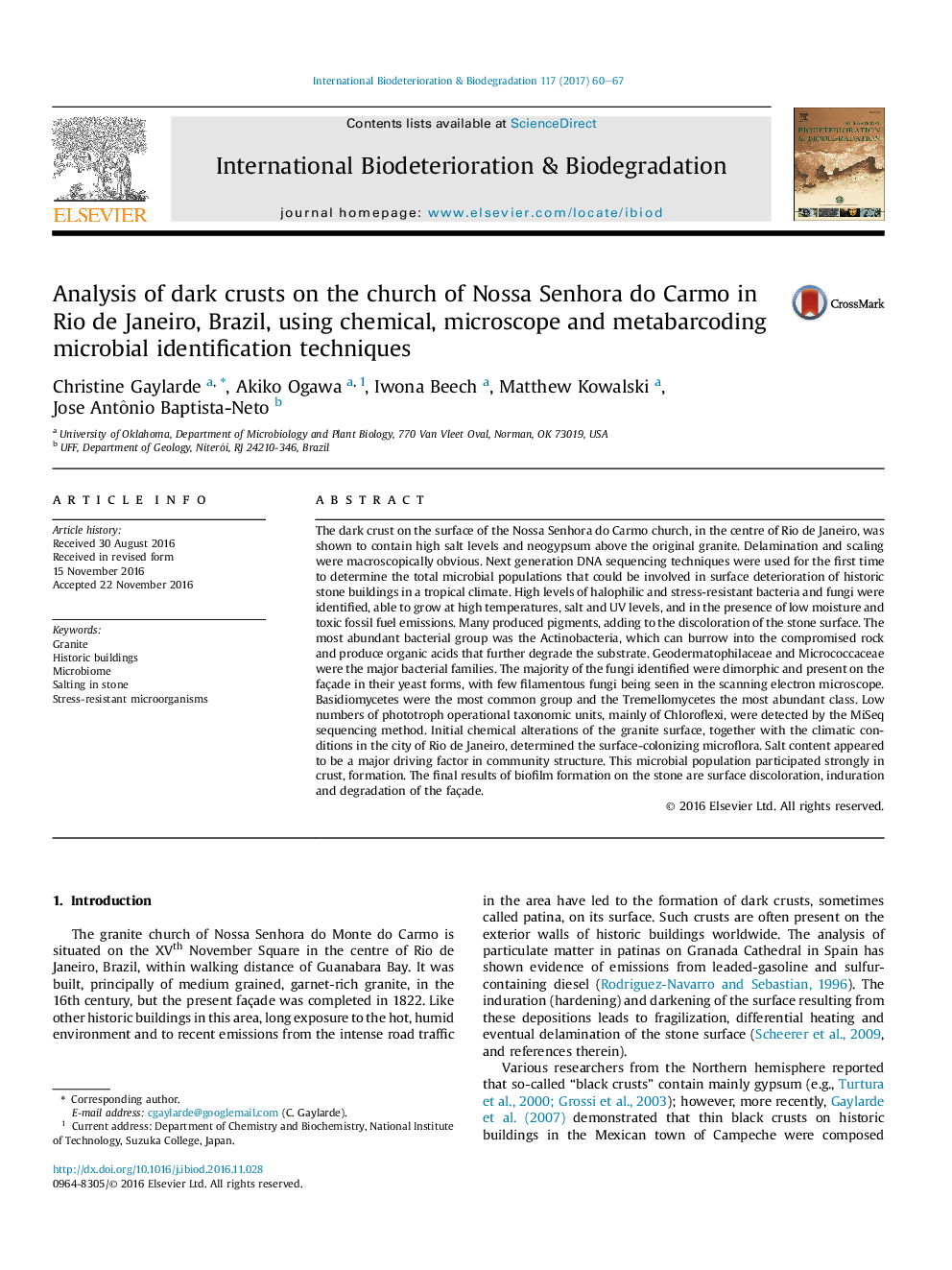| کد مقاله | کد نشریه | سال انتشار | مقاله انگلیسی | نسخه تمام متن |
|---|---|---|---|---|
| 5740521 | 1616300 | 2017 | 8 صفحه PDF | دانلود رایگان |
عنوان انگلیسی مقاله ISI
Analysis of dark crusts on the church of Nossa Senhora do Carmo in Rio de Janeiro, Brazil, using chemical, microscope and metabarcoding microbial identification techniques
دانلود مقاله + سفارش ترجمه
دانلود مقاله ISI انگلیسی
رایگان برای ایرانیان
موضوعات مرتبط
علوم زیستی و بیوفناوری
علوم محیط زیست
علوم زیست محیطی (عمومی)
پیش نمایش صفحه اول مقاله

چکیده انگلیسی
The dark crust on the surface of the Nossa Senhora do Carmo church, in the centre of Rio de Janeiro, was shown to contain high salt levels and neogypsum above the original granite. Delamination and scaling were macroscopically obvious. Next generation DNA sequencing techniques were used for the first time to determine the total microbial populations that could be involved in surface deterioration of historic stone buildings in a tropical climate. High levels of halophilic and stress-resistant bacteria and fungi were identified, able to grow at high temperatures, salt and UV levels, and in the presence of low moisture and toxic fossil fuel emissions. Many produced pigments, adding to the discoloration of the stone surface. The most abundant bacterial group was the Actinobacteria, which can burrow into the compromised rock and produce organic acids that further degrade the substrate. Geodermatophilaceae and Micrococcaceae were the major bacterial families. The majority of the fungi identified were dimorphic and present on the façade in their yeast forms, with few filamentous fungi being seen in the scanning electron microscope. Basidiomycetes were the most common group and the Tremellomycetes the most abundant class. Low numbers of phototroph operational taxonomic units, mainly of Chloroflexi, were detected by the MiSeq sequencing method. Initial chemical alterations of the granite surface, together with the climatic conditions in the city of Rio de Janeiro, determined the surface-colonizing microflora. Salt content appeared to be a major driving factor in community structure. This microbial population participated strongly in crust, formation. The final results of biofilm formation on the stone are surface discoloration, induration and degradation of the façade.
ناشر
Database: Elsevier - ScienceDirect (ساینس دایرکت)
Journal: International Biodeterioration & Biodegradation - Volume 117, February 2017, Pages 60-67
Journal: International Biodeterioration & Biodegradation - Volume 117, February 2017, Pages 60-67
نویسندگان
Christine Gaylarde, Akiko Ogawa, Iwona Beech, Matthew Kowalski, Jose Antônio Baptista-Neto,